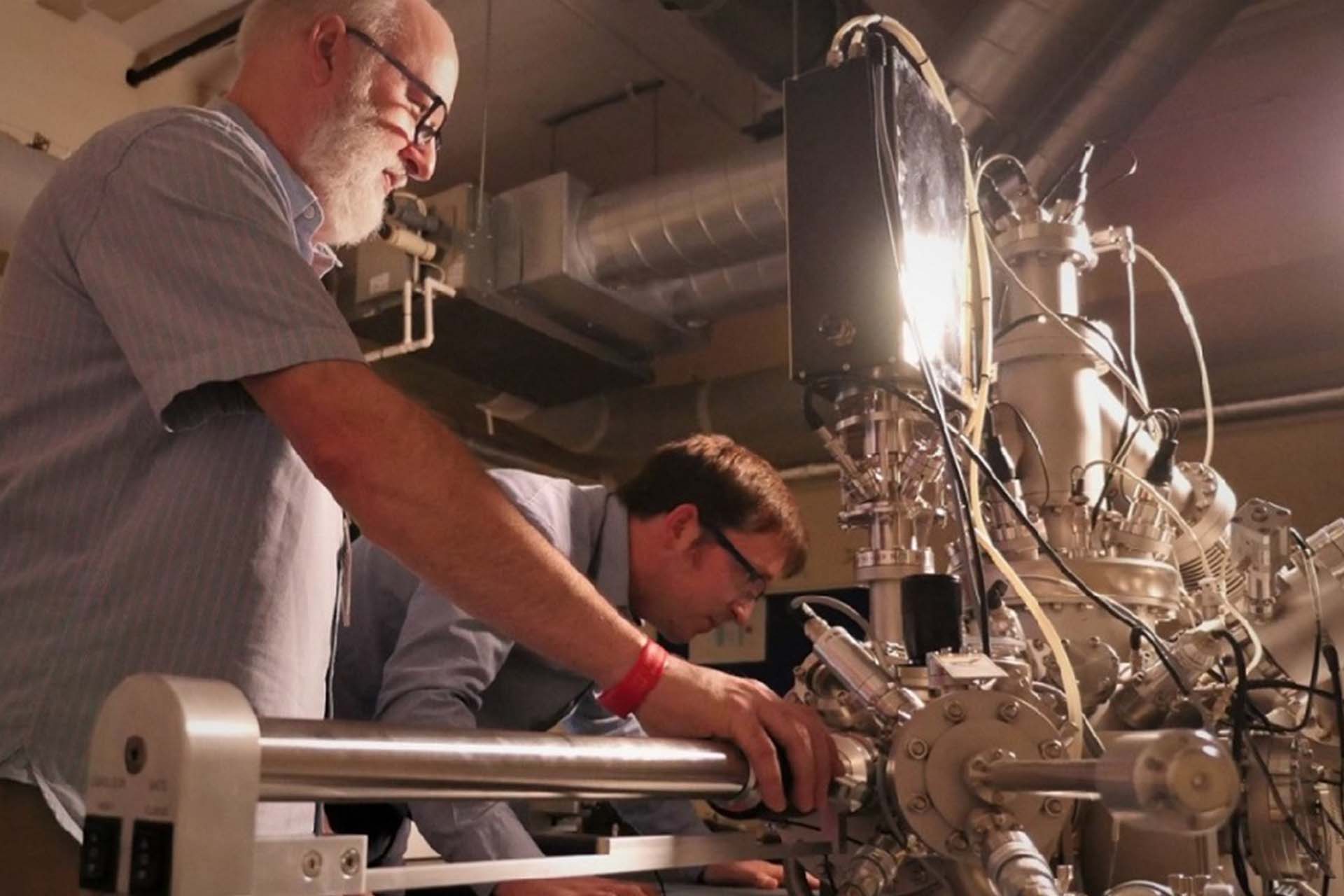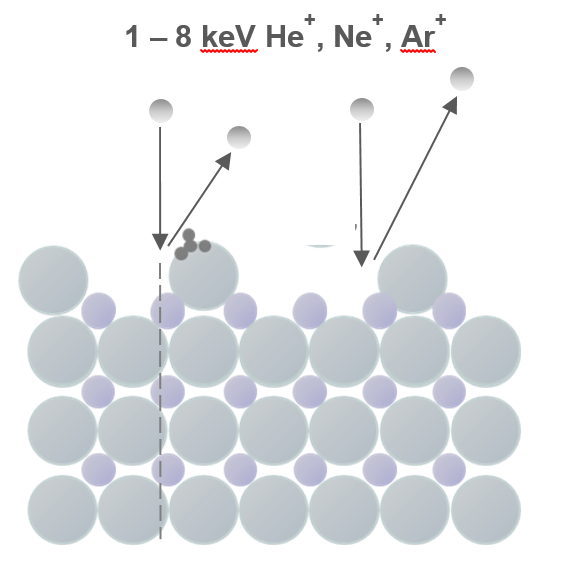Low Energy Ion Scattering (LEIS)
Low-energy ion scattering (LEIS) is a method of determining the composition of the outer atomic layer of a materials surface, which is inherently involved in processes such as growth, etching, diffusion, adhesion and others.
The extreme surface sensitivity achievable with LEIS, differs from most other surface analytical techniques, which generally sample composition over a few or even many atomic layers. LEIS analysis facilitates research at the surfaces and interfaces found in new materials; catalysts, sensors and electronics, condensed matter, tribology, surface engineering and manufacturing.

LEIS measures the chemical composition of a surface by scattering noble gas ions from the sample surface. By measuring the energy of the backscattered ions the masses of the scattering surface atoms can be determined.
Low energy ion scattering is sensitive to the outermost atomic layer of a sample. Ion scattering also provides quantitative sub-surface composition up to a depth of 10 nm.
LEIS can be combined with sputter depth profiling to yield near surface composition and structure.
Time-of-flight mass filtering of the scattered ions provides sub-monolayer detection limits.
Using focussed ion beams allows evaluation of the chemical information with respect to the position on the sample surface, generating images of the lateral distribution of individual surface materials.
